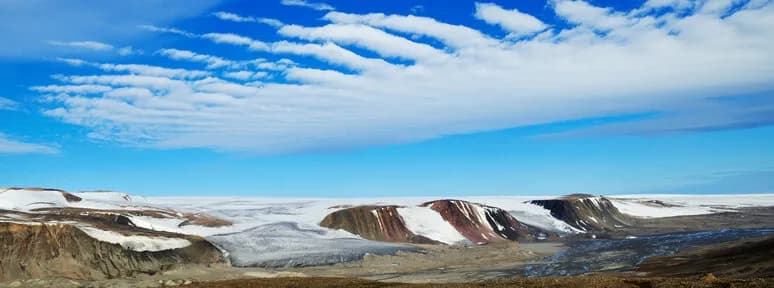We Know Because We Go! | Book with a 5-Star Team,| Trusted by 10,000+ Divers
Best Scuba Diving in Antarctica
Diving in Antarctica offers surreal underwater landscapes, encounters with unique wildlife like emperor penguins and seals, and the thrill of exploring icy, pristine waters in one of Earth’s last frontiers.

Destination Highlights
Average flight time from LAX
15
Visibility
average of 40-80 feet
Average Water Temperature
34
Coldwater Diving
Antarctica Scuba Diving Highlights
Antarctica offers a unique and thrilling polar diving experience as one of the last remote areas of wilderness on earth. Divers get to take part in the pioneering exploration of these isolated waters, viewing stunning ice formations, glaciers, and some of the globe's rarest wildlife. There are also exciting options for topside adventures. For a first hand account of diving in Antarctica, read our Antarctica 2023 Trip Recap.
Intro to Antarctica
Explore the most untouched and unspoiled territory in the world and experience a region most humans will never see. Antarctica's polar diving provides access to an uncharted world with an abundance of marine life.
Antarctica Marine Life
There are many regions to choose from within the Antarctic, and trips can be planned according to preference of adventure type, location choice, or hopes for particular wildlife encounters. Polar divers may enjoy an abundance of thriving macro life. Other encounters may include leopard seals, a variety of penguins, and perhaps even whales. Topside in the greater Antarctica region, visitors get the opportunity to view a large variety of birds including albatross, elder ducks, and many more flying birds, along with emperor, gentoo, chinstrap, macaroni, and adelie penguins, bearded seals, elephant seals, fur seals, and more.
Check out some of Antarctica's awesome wildlife.
Facing a leopard seal, like any predator, is exciting. Leopard seals, however, are mostly curious about their underwater visitors, as shown in this video:
Dive Conditions
Water temperatures maintain a high level of salinity, keeping its temperatures between 23 and 46 degrees fahrenheit. In November to March, before the plankton blooms, visibility can be excellent, ranging even into hundreds of feet. The visibility is largely dependent on the level of pack ice (as less pack ice results in more sunlight and, therefore, plankton blooms), which varies from year to year. This makes it difficult to predict average visibility, but in the dive season of 2013, polar divers reported an average of 40-80 feet.
Extra precautions are taken in this region due to the frigid temperatures and isolation, and divers absolutely must be experienced and healthy to dive Antarctica's waters.
How To Get To Antarctica
This dive destination is not an easy place to reach due to its remoteness. The best and easiest way to travel to Antarctica is by taking either a plane or a ship from the tip of South America. Common departure airports are Punta Arenas (PUQ), Chile, or Ushuaia (USH), Argentina.
Topside Activities
The polar diving isn't the only draw to Antarctica; there are plenty of exciting elements of a trip to one of the most challenging travel destinations. Excursions also feature awe-inspiring land adventures, wildlife encounters, and photographic opportunities. Travelers get the option to hike and snowshoe, camp on the stunning glaciers, mountaineer and trek (on or off skis), kayak, sail, seek out emperor penguins, whale watch, parrticipate in photo workshops, and go bird watching. There is history to be experienced here as well: no visit is complete without a tour of Cape Adare, where the first wintering of Antarctica took place. Carsten Borchgrevink'shut has been preserved since 1899 and demonstrates how truly daunting it must have been for this explorer to pioneer travel in Antarctica.
Recommended Scuba Gear
Download our full scuba gear guide to Antarctica, Bluewater Travel guests receive 10% OFF! Click the image below to download (PDF).

